| HOME |
|---|

| HOME |
|---|

On our journey outwards from the Sun, at a distance of about 36 million miles (58 million kms), the first planet we encounter is Mercury, the smallest and speediest planet in the solar system. Its year (one complete solar orbit) lasts only 88 days, as it speeds around the Sun at 140,000 miles per hour, more than twice as fast as Earth's speed of 67,000 mph. This speed is accentuated by the fact that its small orbit makes it appear to dart back and forth in the sky much quicker than the other planets. So it was only natural for the planet to be named after the fleet footed Roman god Mercury, with wings on his feet, known to the Greeks as the god Hermes, speedy messenger of Zeus (Jupiter).
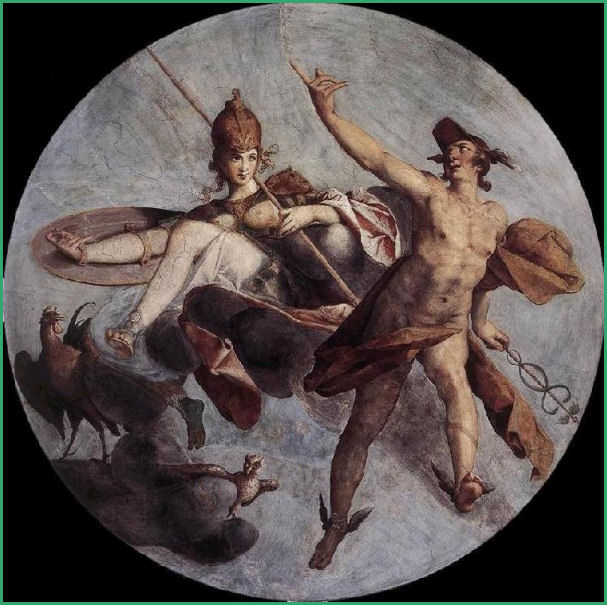
The above painting shows Mercury holding his Caduceus, a staff with two entwined serpents, surmounted by wings. Throughout history, the staff has symbolized commerce and trade, and traditionally carried by messengers, as Mercury himself was the messenger of the gods, as well as the protector of merchants, shepherds, gamblers, liars and thieves. Unfortunately, in modern times, the Caduceus has been confused with the staff of the famous Greek healer Asclepius (represented by the constellation Ophiuchus), which has only one serpent and no wings, and from ancient times has been the symbol of healing and medicine.
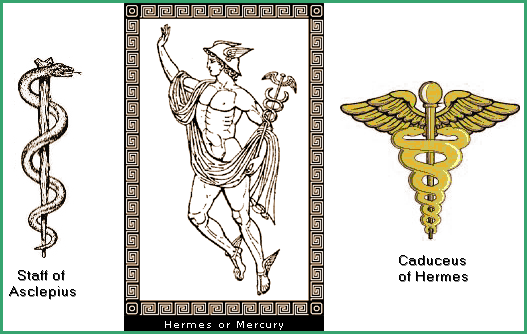
Mercury is a small, tortured ball of rock, mostly iron, and as far as we can tell, completely lifeless. It has no atmosphere to protect it from the deadly radiation of the Sun, or the constant bombardment of meteors. The unprotected surface of Mercury endures a constant pounding from countless bits of cosmic rubble pulled in by the enormous gravity well of the Sun, a story told by the planet's heavily cratered surface.
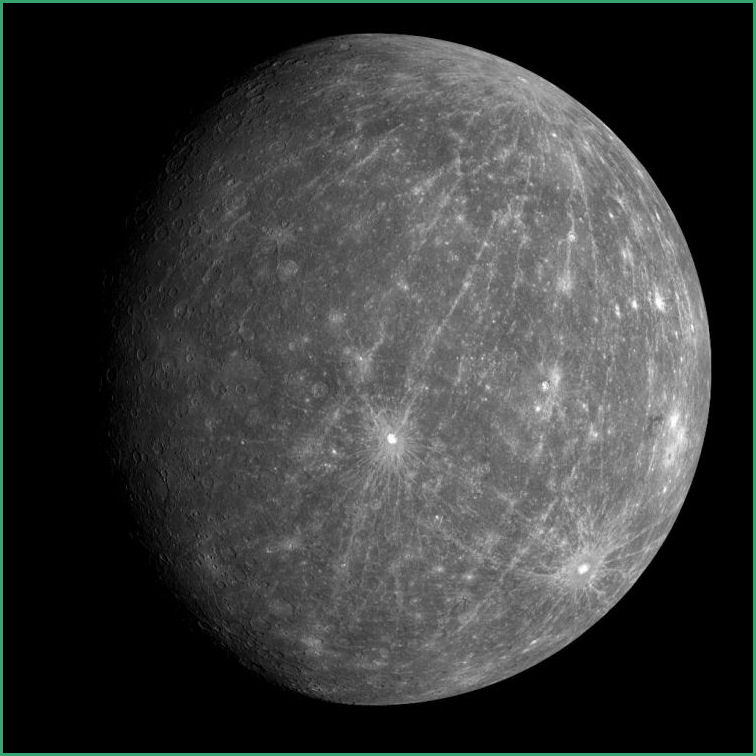
With a diameter of only 3,032 miles (4,851 kms), Mercury used to be the second smallest planet in the solar system, but when tiny Pluto was demoted to dwarf planet status by the I.A.U. in August, 2006, Mercury officially became our smallest planet. In fact there are two moons in the solar system that are larger than Mercury.
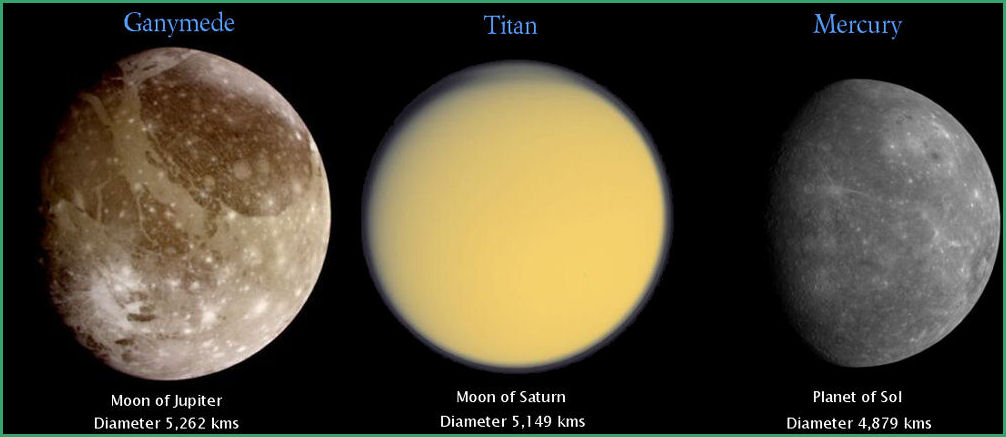
Since Mercury is between us and the Sun, we never quite get to see the entire planet, because just as in the case of the Moon and Venus, we can only see that part of the planet lit by the Sun. When Mercury is between Earth and the Sun, all we see is a tiny black dot moving across the face of the Sun. As it moves to the side, we begin to see a slim crescent that gradually grows larger, just like the waxing crescent Moon. But just before Mercury becomes completely "full" it passes behind the Sun, and is lost to view.
When the Sun rises on Mercury, the temperature almost immediately jumps to a blistering 427 ° C, and stays there, no matter what time of year it is, for Mercury has no seasons. Unlike Earth, which is tilted 23 degrees on its axis, Mercury is perpendicular to the plane of its orbit, so the Sun beats down mercilessly on the planet's equator, day after day. When you jump out of bed you land ten feet away, because you weigh only about a third of what you would weigh on Earth. Most of your waking hours are spent trying to dodge space debris falling from the sky, since there is no atmosphere for it to burn up in. The gravity of the Sun is like a magnet, slowly but surely drawing in all the loose rocky debris in the solar system, and poor little Mercury is right in the line of fire.
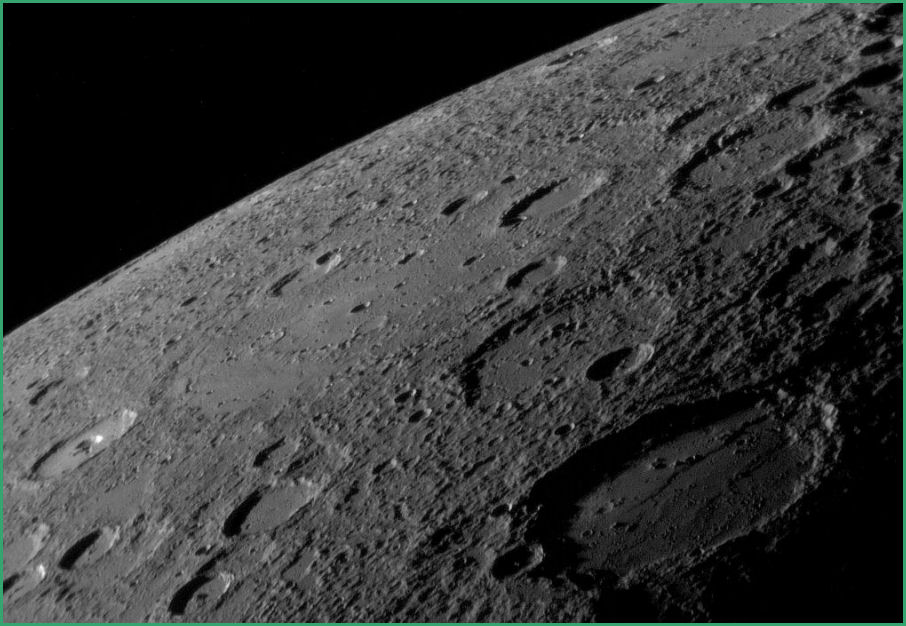
Because Mercury's poles are never tilted towards the Sun, if you can make your way to the top or bottom of the planet, you might find some shade, and maybe even some ice inside one of the pole's deep impact craters that the Sun can never reach. For almost two months (Earth-time) an enormous Sun, three times larger than it is on Earth, slowly creeps across the sky. At such a close distance, the Sun's powerful gravity constantly pulling on the tiny planet has slowed its rotation to a crawl, so the Sun stays up in the sky for 59 Earth days. However, with no atmosphere to hold in the heat, when the Sun finally sets on Mercury, the temperature immediately drops down to -173 ° C, and you had better find a way to keep warm, because the Sun won't rise again for another two months.
A few times a year, Mercury strays far enough away from the Sun in our sky that it can be briefly viewed just before sunrise, or just after sunset, as in the photo below where it shares the sky with Jupiter (the brighter planet on the left).
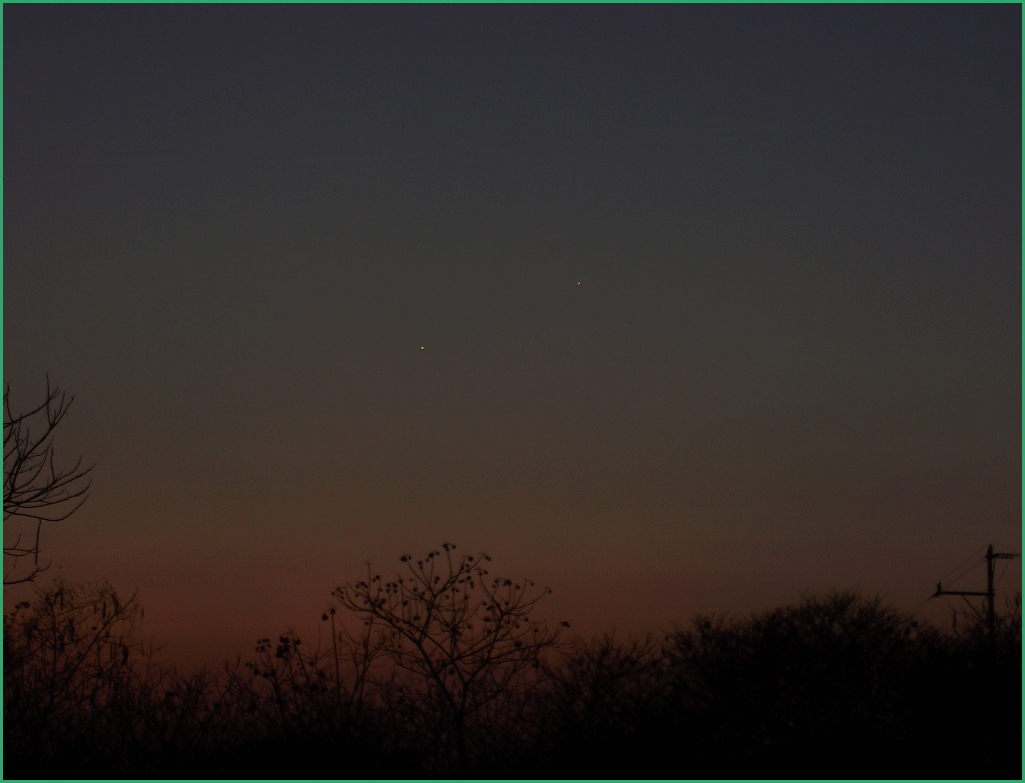
Mercury has no moons to light up the night sky, but it does have something else. It has a light in its night sky that we don't. A dazzling blue/white light, brighter than any star. It has us. It has the planet Earth in its night sky, and it would most certainly look very big and bright and beautiful.
But looking even bigger and brighter and arguably even more beautiful in the clear, night sky of Mercury, would be its much closer neighbour, the brilliant planet Venus, our next encounter as we journey outwards from the centre of the solar system...
|
|
|
| SOL | MERCURY | VENUS | EARTH | METEORS | MOON | MARS | ASTEROIDS | JUPITER | SATURN | URANUS | NEPTUNE | PLUTO | COMETS |
|
|
|